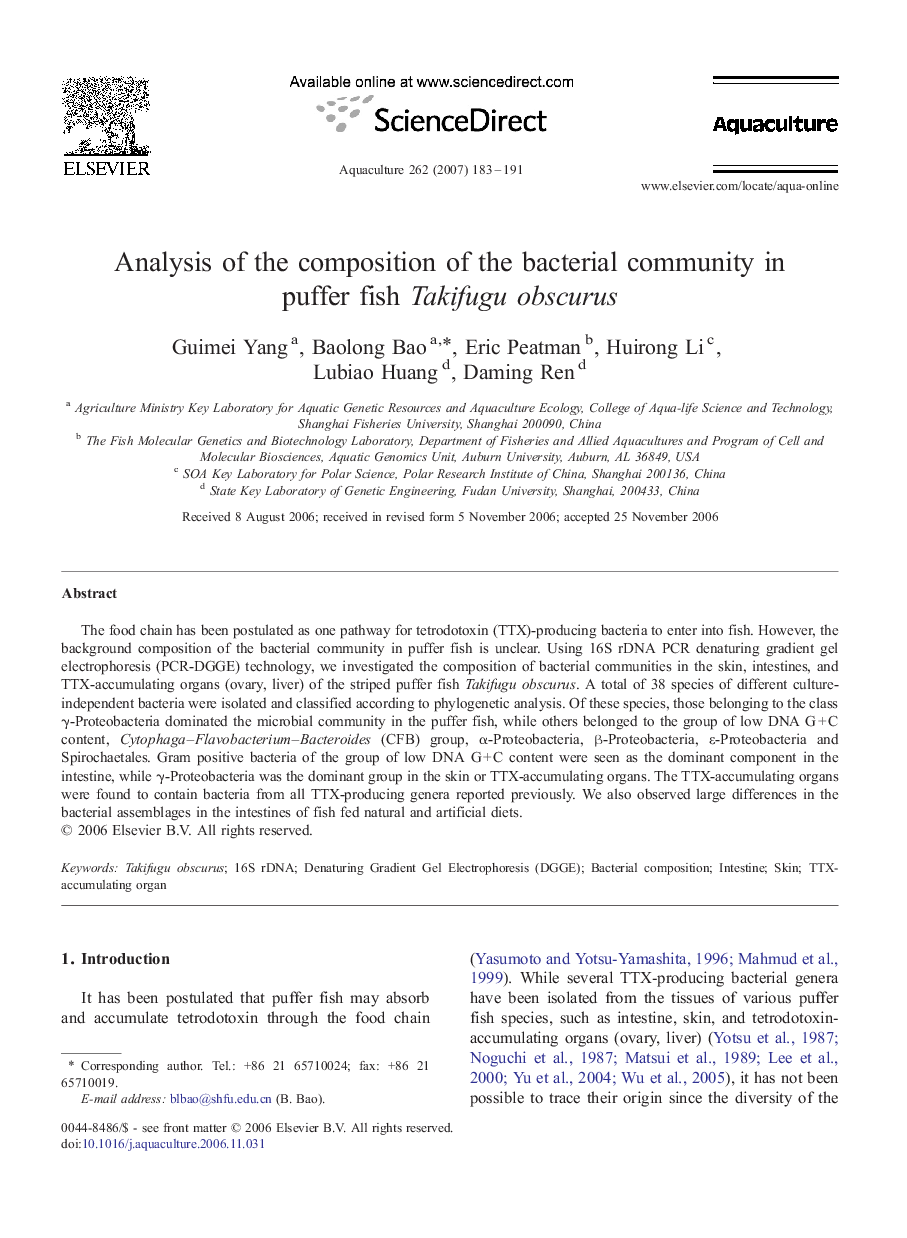| Article ID | Journal | Published Year | Pages | File Type |
|---|---|---|---|---|
| 2425314 | Aquaculture | 2007 | 9 Pages |
The food chain has been postulated as one pathway for tetrodotoxin (TTX)-producing bacteria to enter into fish. However, the background composition of the bacterial community in puffer fish is unclear. Using 16S rDNA PCR denaturing gradient gel electrophoresis (PCR-DGGE) technology, we investigated the composition of bacterial communities in the skin, intestines, and TTX-accumulating organs (ovary, liver) of the striped puffer fish Takifugu obscurus. A total of 38 species of different culture-independent bacteria were isolated and classified according to phylogenetic analysis. Of these species, those belonging to the class γ-Proteobacteria dominated the microbial community in the puffer fish, while others belonged to the group of low DNA G + C content, Cytophaga–Flavobacterium–Bacteroides (CFB) group, α-Proteobacteria, β-Proteobacteria, ε-Proteobacteria and Spirochaetales. Gram positive bacteria of the group of low DNA G + C content were seen as the dominant component in the intestine, while γ-Proteobacteria was the dominant group in the skin or TTX-accumulating organs. The TTX-accumulating organs were found to contain bacteria from all TTX-producing genera reported previously. We also observed large differences in the bacterial assemblages in the intestines of fish fed natural and artificial diets.
